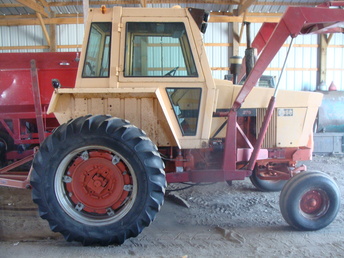Dave from MN
Well-known Member
Opinions, other than flotation on soggy ground, what do most of you think about running duals? I Have duals on my big tractor (the Oli), but not on my Case. To me I think I should run duals on al my tractors in the spring to reduce compaction, plus the tractor sure rides smoother on the rougher ground, such as chisel plowed ground. Traction is also a big factor in my mind, because I feel I can pull larger peices with less slippage. Neighbor who has same ground( and also is calling me to pull him out) says duals are a waste of money on our ground. What do some of you think? Just looking at differences in opinions here for discussion sake. I am getting a set for the Case. Which I finnally posted a picture of. $3200, included the loader, new bale spear, snow, and dirt/manure bucket. All I had to do so far was replace a lower cab window, and replace intake/exhaust gaskets and mill down the exhaust manifold. I do have to fix the PTO though, it is always turning.



